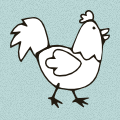Mushroom hunting at Ogden Water, Halifax
Yesterday John, Lily-dog and I went on a long awaited funghi forage, led by Jesper Launder and organised by Slow Food West Yorkshire.
We went on another wild food walk with Jesper & SlowFoodWY in May – mostly tasting different greens and crayfish – and as our interest in wild food and mushrooms has sky rocketed since then, we were very much looking forward to yesterday’s walk. Unfortunately some local rapscallions nearly caused us to miss it at the last minute – on leaving the house to get into the car, we found someone had nicked one of the wheels! We were grateful, again, that we have a cheap runaround car that we don’t really care about – and that they’d left all the nuts etc, so we could fit the spare and get to the walk just half an hour late.
We met the group in the woods just over the dam at Ogden Water. We’d not been to the reservoir before but will return again – it was misty so unearthily beautiful – and the woods a combination of broadleaf and conifer tree, making the mushroom picking extensive and varied. The group had already picked a few different types of mushroom but between us we found many, many more as the walk went on.
As with the considerably warmer and dryer wild food walk earlier in the year, Jesper enthusiastically identified every ‘shroom we took over to him, and told us how to use them or cook them, or whether to discard them unless we wanted hallucinations and painful death. There were too many different types to remember but I did get confirmations on some that I had been unsure about – and got to try eating some I’d seen & identified previously but not wanted to cook up for fear of that painful death stuff.
Some of the ones we got to eat and I’d happily pick & eat again:
- The Deceiver (Laccaria Laccata) – something I’ve seen before but not concretely identified, small and unsubstantial but good in a mixture
- Amethyst Deceiver (Laccaria Amethystea) – something we’d found before and identified, because nothing else is quite so purple
- Honey Fungus (Armillaria Mellea) – we found a full stump of these just near the end of the walk
- Grisettes (Amanita Vaginata) – something not included in my little pocket mushroom book so not something I’d really heard of before, but a decent size so well worth looking out for
- Wood Blewit (Lepista Nuda)
- The Blusher (Amanita Rubescens)
I also got to ask questions I’d been wanting to ask since I started identifying mushrooms such as “is there anything so poisonous that we shouldn’t pick it up?” (no, even licking your fingers after a death cap is probably ok) and “how much do you need to eat of the poisonous ones before the painful death thing?” (depends on the mushroom, some it’s a lot but death caps can sometimes kill after just half a cap so it’s well worth being careful).
I also got a book recommendation from Jesper – Mushrooms by Roger Philips – which will hopefully be a useful definitive guide in comparison to my existing not great ones. If nothing else, I find it very useful to cross-referencing potentially identifications (the more pictures the better).
All in all, despite the wheel-stealing-stress and the rain, it was a great day. We met some lovely people, learned a lot about funghi and found a fab new place to take Lily-dog. I’d highly recommend a walk with Jesper and will definitely be going on the next SlowFoodWY wild food walk.
(Apologies for the lack of pictures – I forgot my camera in all the where’s-the-wheel-gone hoohah. I’m hoping someone else will post some freely licensed pictures soon!)
One Comment
Join the conversation and post a comment.
Trackbacks/Pingbacks
- Learning patience from wild food (and veg growing) | The Really Good Life - [...] I said in my post about our fungi forage last weekend, that walk taught me to confidently identify about…





Ooh, @SlowFoodWYorks has posted a picture of some of the edible board, just before we cooked them up with butter and ate them with undue haste!
Roughly left to right, they’re mostly deceivers, grisettes, amethyst deceivers and honey fungus.